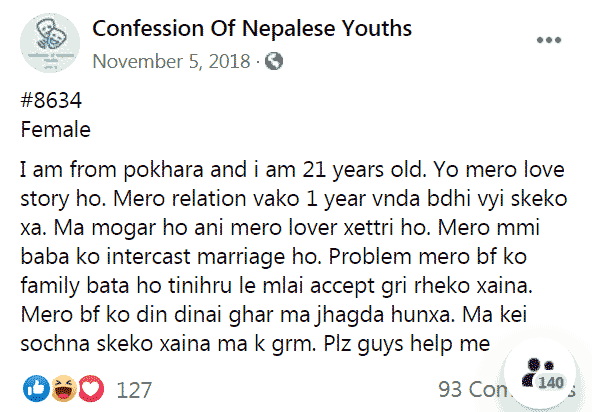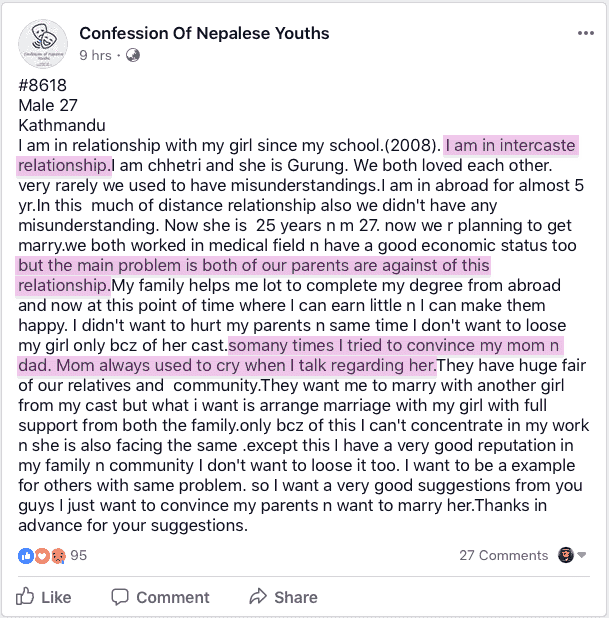
In Nepal caste still plays a role in the eligibility for marriage between two young adults, as outlined above.
The parents of these young Chhetri and Gurung adults are probably just several years older than me. Marriage in Nepal is as much a business of the families as that of the two actually tying the knot.
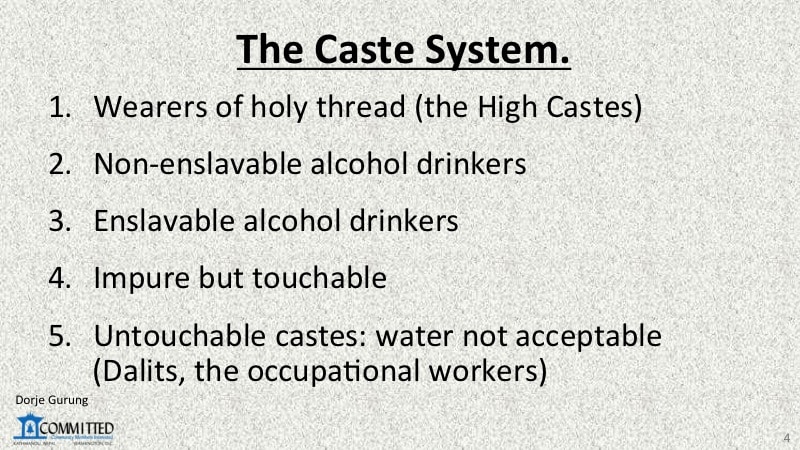
Anyway, the situation these two young Nepali adults have found themselves in is NOT the exception.
This has been and is actually still the rule.
The laws of the country, especially social laws, have changed a lot and we have some of the most progressive laws in the region. The 1854 discriminatory law of the land was amended in 1963 and then again in 1990, outlawing caste-based discrimination. And yet, most of the population still adhere to the beliefs, practices, and social norms of the old.
Of course, it takes time for awareness, attitude, and behavior of individuals and the society as a whole to change and catch up to the laws. When implementation and enforcement of the laws is as weak as it has always been and continues to be, of course it doesn’t help. Additionally, when the high castes, the ruling class, were — until 1990 — hell bent on ensuring their hegemony and have been to a large extent even since then, of course, society struggles to make progress.
In addition to implementation and enforcement of laws, education would have helped greatly.
Unfortunately, the quality of our education is abysmally poor. Even as poor as it is, reach has been an issue throughout the history of the country. Even now, after we have had a democratic form of governance for almost three decades, that is still an issue.
According to the 2011 census report, the percentage of Nepalis 5 or over with 12 or more years of education is only about 7%.
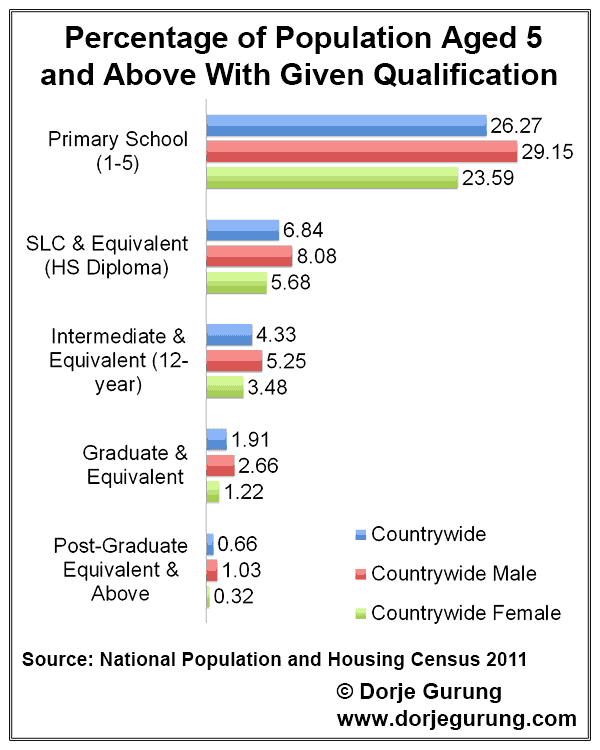
What’s more, someone with 12 or more years of education will not necessarily be considerably more aware of our social issues, or have considerably more enlightened attitude towards them, or behave or act accordingly. Of course not. Our school curriculum doesn’t even teach about the caste system. It’s also worth noting that someone with less than 12 years — or even no — education, will necessarily be conservative when it comes to matters related to caste. Of course not!
Studies have discovered that one needs 25% of the society on your side to change society’s views.
That is, the threshold percentage capable of being the harbinger of rapid societal change towards a certain direction is 25% of the members actively showing support for the change. Otherwise societal change will be slow.
Let’s assume, for argument’s sake, education is the main harbinger of change in views. Let’s also assume that 2/3rd of Nepalis with 12 or more years of education hold liberal views about caste. In that case, for countrywide societal change that 7% will have to reach about 36%! Only when that is reached or exceeded will the society as a whole get on a fast track to change.
I don’t know the exact rate at which Nepal is graduating students. If I had to guess I would say it’ll be two more generations before we reach anywhere near 36%.
Until then, in Nepal caste will continue to be part of many different equations, including marriage.
The comments under the post filled me with some hope though! All the comments probably came from young adults like the two. Here they are!
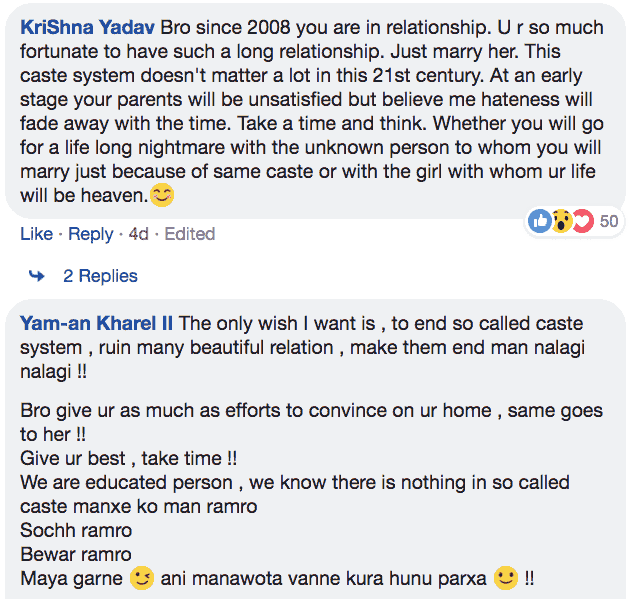
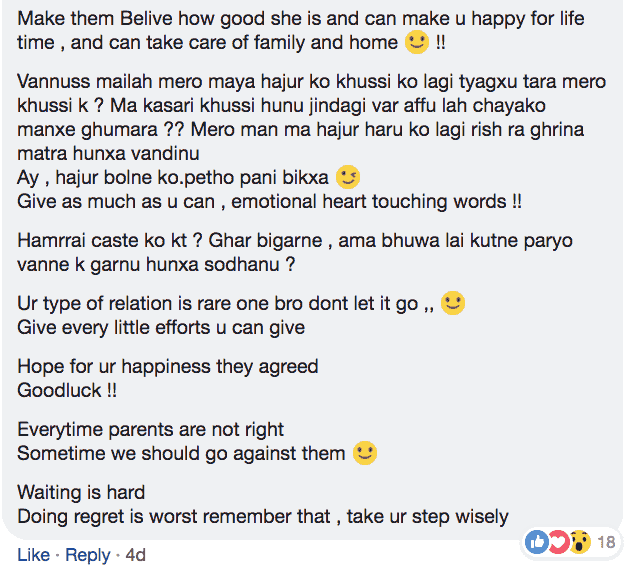
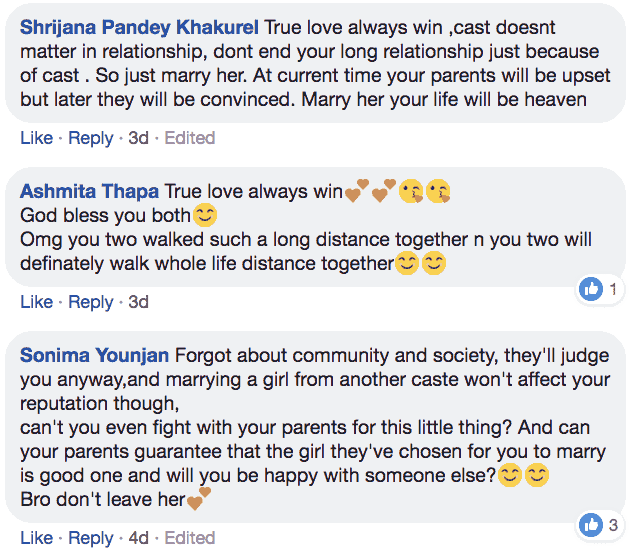
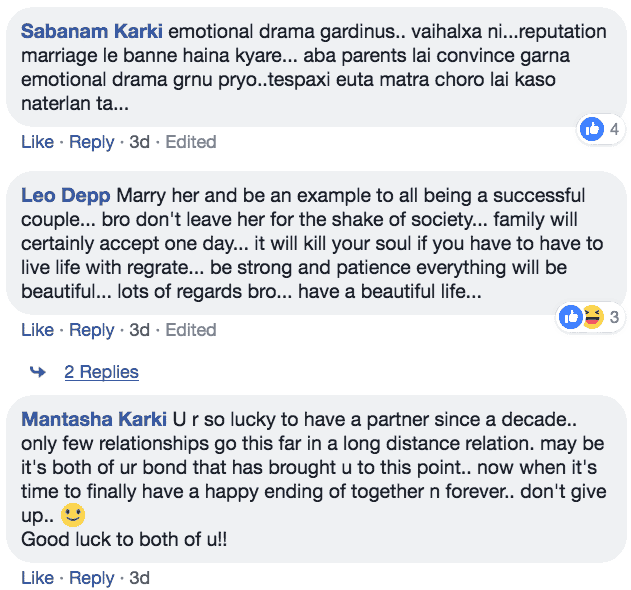
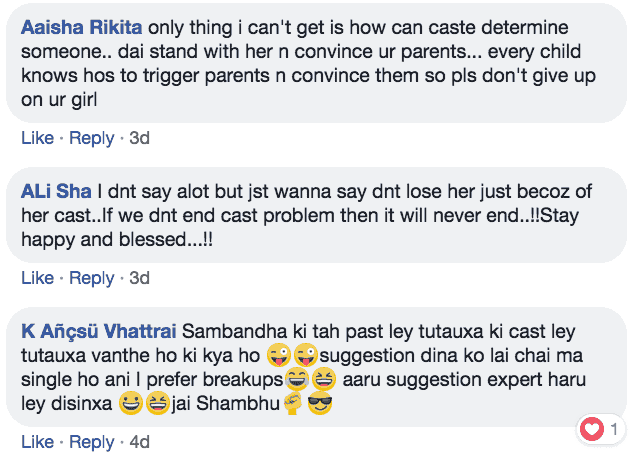
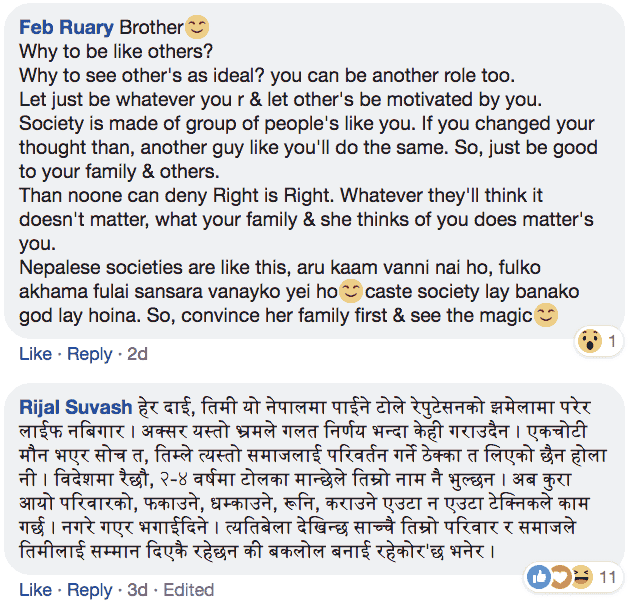
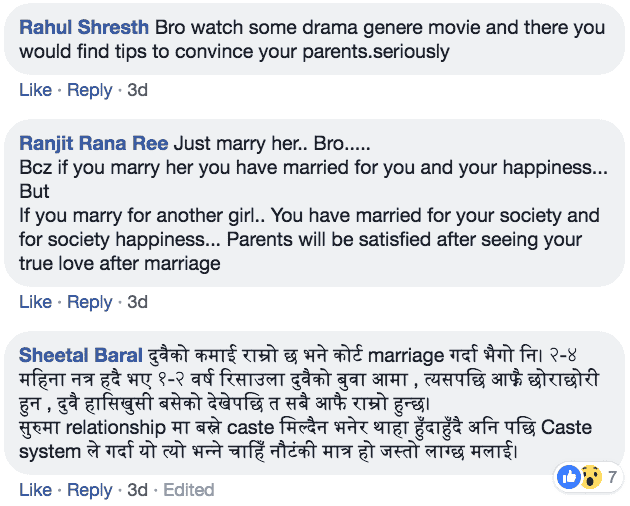
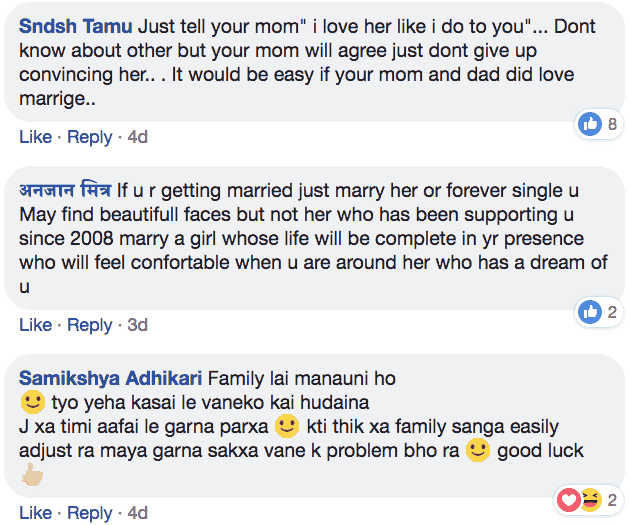
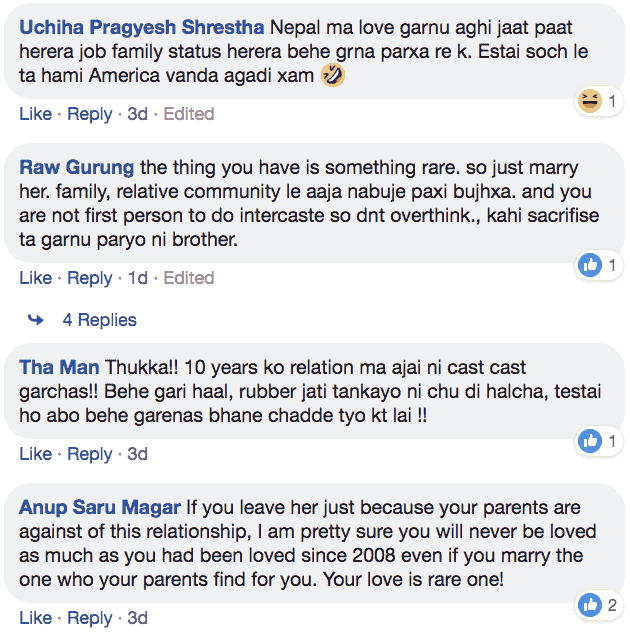
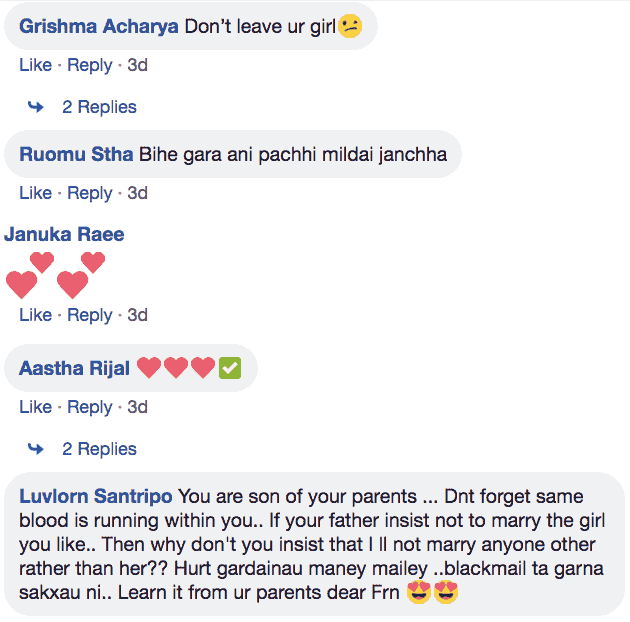
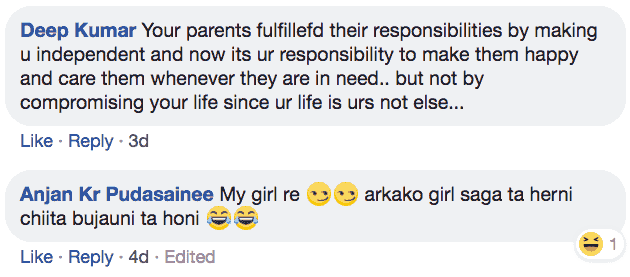
What do you think?
References
Futurism (June 8, 2018). Want to Change Society’s Views? Here’s How Many People You’ll Need on Your Side. “We’ve seen plenty of shifts in society’s views — in just the last hundred years in America, the majority’s opinion on everything from gay rights to gender equality changed dramatically. However, we’ve never really nailed down if there was a “tipping point” for this social change — a specific number of people needed to push a belief from the fringes into the mainstream.
“Estimates ranged from as low at 10 percent of a population to as high as 51 percent, but now, researchers from the University of Pennsylvania and the University of London claim an online experiment let them hone in on the most likely number: 25 percent. They published their study today in the journal Science.”
Another Confessions of Nepalese Youth post.
If you weren’t able to make out, this one is by a young adult Magar woman who is in love with a Chhetri man. Her parents are different castes and so they don’t have any issue. The man’s parents however don’t “accept” her. According to her confession, the man “has arguments with his family every single day. I can’t decide what to do.” [Added on Nov. 7, 2018.]

